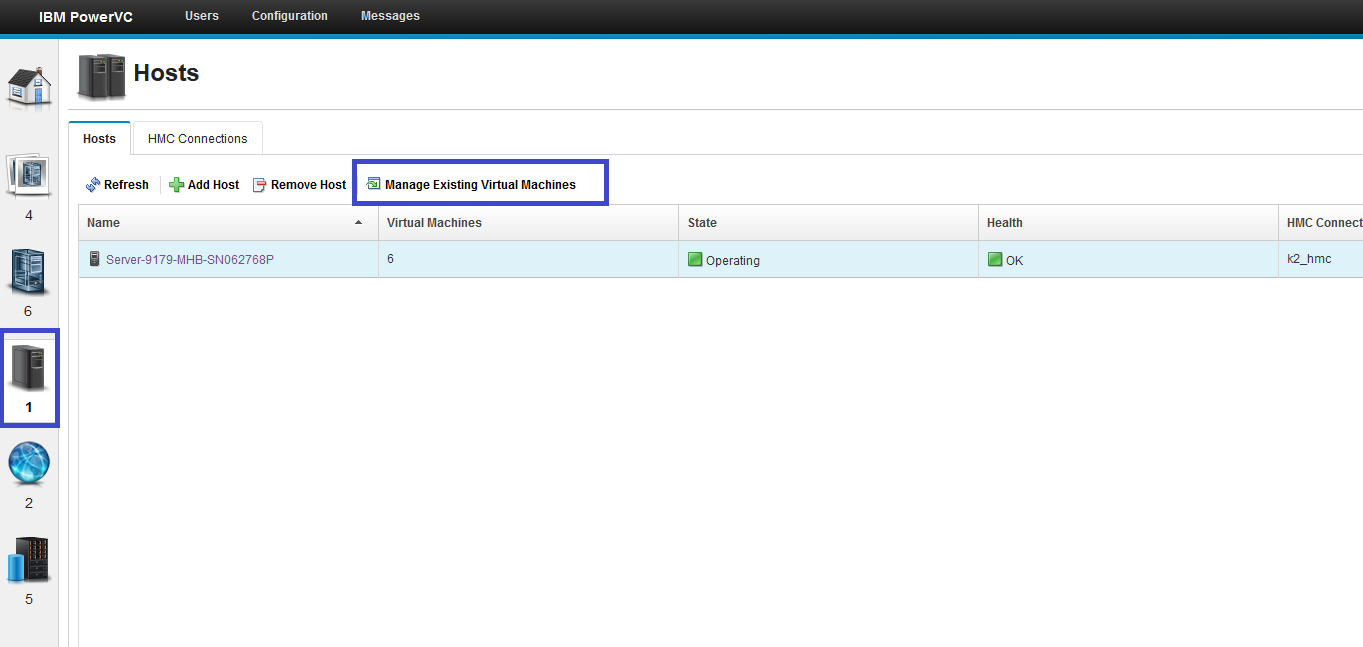
It’s possible, with PowerVC, to manage existing AIX and Linux partitions in your environment. This may be useful for customers that have recently installed PowerVC in their environment and have existing AIX partitions. The question that is often asked is “Can I manage these existing partitions with PowerVC?”. These existing partitions were deployed outside of PowerVC, often long before PowerVC was even available as product from IBM. Fortunately the answer to this question is most likely yes!
Before you add an existing virtual machine to PowerVC, ensure that the following requirements are met:
Here’s an example of managing an existing partition with PowerVC. Click on the Hosts icon from the PowerVC home screen then click on the “Manage Existing Virtual Machines” icon.
You are presented with a drop-down list of all the (Power Systems) Hosts known to PowerVC. Select the appropriate host where the existing partition currently resides.
Next you’ll be asked if you want to manage any supported virtual machines that are not currently being managed by PowerVC. “Supported” (with PowerVC Standard Edition v1.2.1) means any virtual machine that is either using virtual fibre channel adapters attached to supported SAN and storage devices (typically brocade switches and v7000) and/or virtual SCSI adapters attached to disk in a VIOS shared storage pool, that is currently managed by PowerVC.
Or you can select a specific virtual machine (or machines) to manage. I’ve selected one specific partition I wish to manage with PowerVC. It is an AIX partition that is connected to a shared storage pool (SSP). The SSP is already managed by PowerVC but the AIX partition is not.
A list of virtual machines (partitions) will be displayed next. Select the partition you’d like to manage with PowerVC and click on Manage.
Under the Virtual Machines view you’ll see the partition that you selected. It will appear in an Active and Pending state.
After a minute or two, the partition will change to an Active and OK state. The virtual machine is now under the management of PowerVC. You can now stop, start, restart, resize, migrate, attach volumes to, capture and/or delete the virtual machine through PowerVC.
Just as a point of interest, you can also access the Manage Existing option from the Virtual Machines view in PowerVC.
If you need to remove a partition (virtual machine) from PowerVC management (without deleting the partition) you can do so using the following procedure. From the Hosts view, select the desired Host and under Virtual Machines, select the partition you want to un-manage.
PowerVC will prompt you to confirm the removal of the virtual machine from PowerVC management. This does not delete the virtual machine; it will continue to run without disruption.
The virtual machine is removed from PowerVC management.